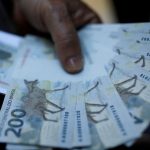
BRASILIA (Reuters) – Brazil’s government will announce on Monday new measures to help foreigners with foreign exchange hedges on their investments in sustainable development, while avoiding currency and fiscal risks for the Treasury, said two people familiar with the plan.
The plan includes a new channel for about $2 billion in forex derivatives, contracted by the Inter-American Development Bank (IDB) and distributed in Brazil by the central bank, said the sources, who requested anonymity to discuss confidential plans.
The initiative, leveraging the IDB’s triple-A credit rating to facilitate longer-term and lower-cost currency derivatives to encourage foreign investment in Brazil’s “green” development initiatives, is expected in an executive order.
Brazil’s Finance Ministry, the central bank and the IDB all declined to comment.
Brazil’s central bank is expected to sign a comprehensive derivatives contract with the IDB to make the program operational, said the sources.
In the same executive order, the government will also authorize the central bank to roll over its $100 billion stock of swaps for longer terms, aiming to enhance liquidity and reduce currency volatility, one of the sources said.
The green light for the central bank to roll over swaps for longer terms is deemed “structural” and “very important,” as there is limited liquidity in the market for terms exceeding five years, said the source.
With these adjustments, Brazil’s swaps market could be far more dynamic, with horizons extending up to 15 years, which could have a significant impact on financing infrastructure projects, the source added.
Monday’s foreign-exchange package will include other measures for currency protection, including a liquidity line for structured project finance for green investments, supported by the IDB, both sources said.
The goal is to help projects that need to maintain a debt service coverage ratio in a strong currency, such as a solar power plant with revenue in Brazilian reais, financed in U.S. dollars. The new liquidity line would help such a project meet its financial commitments amid a sudden currency fluctuation.
“In this way, you save the project, and you allow more patient capital to take a bigger risk,” said the second source.
Long-term currency hedging has long been a challenge in Brazil, scaring away some foreign investors from Latin America’s largest economy.
President Luiz Inacio Lula da Silva’s government has tackled the issue in an attempt to bolster foreign investment in areas such as renewable energy and sustainable infrastructure, aiming to position Brazil as a major player in climate change.
Brazil raised $2 billion in November with its first “green” sovereign bonds in the international market, using a framework whose construction also received support from the IDB.
Finance Minister Fernando Haddad first revealed outlines of the currency hedging efforts in an October interview with Reuters.
In 2023, foreign direct investments in the country (FDI) fell by 17%, to $62 billion.
To read the full article, Click Here

